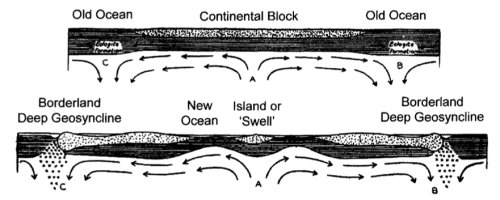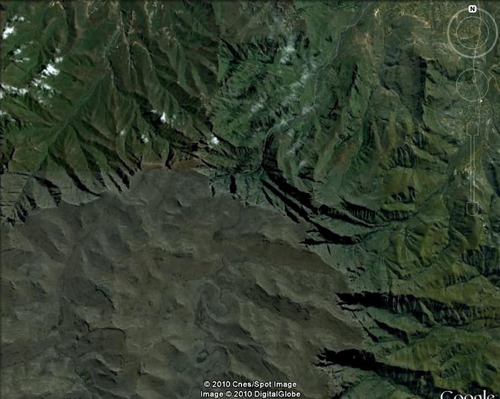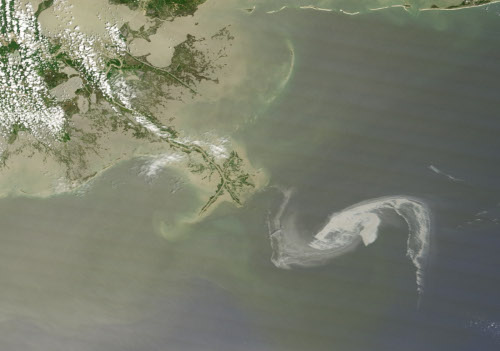 Callan’s theme of “geological heroes” for this month’s Accretionary Wedge gives me the opportunity to highlight an act of intellectual bravery that I have always admired. The man behind this act was Arthur Holmes
Callan’s theme of “geological heroes” for this month’s Accretionary Wedge gives me the opportunity to highlight an act of intellectual bravery that I have always admired. The man behind this act was Arthur Holmes

Arthur Holmes in 1910 (left) and 1960 (right).
Holmes is probably most famous for his work on establishing radiometric dating as a reliable method of dating rocks, which definitively pushed the age of the Earth into the billions of years, and allowed geologists to finally put some numbers onto the geological timescale. It opened the door to developing a truly global picture of the history of our planet, and the maturation of geology into an empirical, as well as a descriptive, scientific discipline.
But that’s not what I most admire him for.
Holmes’ understanding of radioactivity, and particularly its role of the production of heat inside the Earth, also led him to conclude that the slow motion of continents over geological timescales, as advocated by Alfred Wegener, could potentially be driven by convection currents in the mantle. His model, shown below, incorporates continental rifting and ocean creation above upwellings, and underthrusting of ocean crust and mountain buliding at the edges of continents to accommodate it. Whilst not exactly alike, in the broadest sense it is remarkably similar to the modern plate tectonic picture that emerged in the 1960s. Arthur Holmes first proposed it in 1928.

This is scientific thinking at it’s most pure, and brilliant: taking a step back, cutting through the layers of complexity and contention that have built up around a question, and building the ideas back up again with the advantage of better information. Knowing what we now know, Holmes seems almost stunningly prescient.
But that’s not what I most admire him for, either.
No, it’s what Arthur Holmes did next that I admire most of all. The 1920s was not a good time to be advocating the drift of continents. The rejection of Wegener’s ideas meant that Holmes was proposing a mechanism for a process that many believed did not exist. But rather than dropping the whole idea, or lurching into somewhat overzealous advocacy in the manner of Alexander du Toit, he still talked about it in his lectures. More famously, he devoted the final chapter of his textbook ‘Principles of Physical Geology’, first published in 1944, to discussing continental drift, presenting the apparent geological connections between now widely separated continents, Wegner’s proposal of the ancient supercontinent Pangaea to explain them, and his own theory that rifting and continental drift was ultimately driven by convection currents within the Earth’s mantle.
I have always admired that Holmes was willing to hold his scientific ground – he believed his idea had some merit, and put them, and the evidence in support of them, out there for other geologists to consider. Furthermore, he freely acknowledged the speculative nature of these ideas, and that more evidence would be needed to prove or disprove them. But the the matching geological sequences, fossils, and mountains belts on the two sides of the Atlantic ocean needed to be explained one way or another; and if not this way, then how? This is how you argue minority ideas in science: not through shrill publicity seeking and accusations of scientific censorship and suppression, but through patient, evidence-based advocacy.
Save the somewhat iconoclastic final chapter, ‘Principles of Physical Geology’ was very highly regarded, which meant that many younger geologists were at least made aware of the arguments that Wegener had made, and the evidence he amassed to make them. As the evidence started to pile up in the 1950s and 1960s – the palaeomagnetic data indicating large shifts in latitude, the structure and extent of the mid-ocean ridges, and the magnetic stripes on the ocean floor around them – did Holmes’ final chapter help to nudge these geologists more speedily to their final conclusions? It’s difficult to say, but it certainly seems that plate tectonics was accepted far more speedily and gracefully in the wider geological community on the British side of the Atlantic than on the American one, and I have often wondered whether that was because Arthur Holmes’ low-key advocacy had prepared the way for these new ideas.
![]() A few days ago I got to learn about the Stikine terrane, its beautiful folded rocks, and its potential fossil fuel reserves during the course of searching and winning the 201st edition of Where on Google Earth. Now it’s my turn to maybe inspire someone to learn about a new piece of the Earth’s surface as I get to host the 202nd edition of this geoblogospheric scavenger hunt.
A few days ago I got to learn about the Stikine terrane, its beautiful folded rocks, and its potential fossil fuel reserves during the course of searching and winning the 201st edition of Where on Google Earth. Now it’s my turn to maybe inspire someone to learn about a new piece of the Earth’s surface as I get to host the 202nd edition of this geoblogospheric scavenger hunt.






Nice plan for content warnings on Mastodon and the Fediverse. Now you need a Mastodon/Fediverse button on this blog.